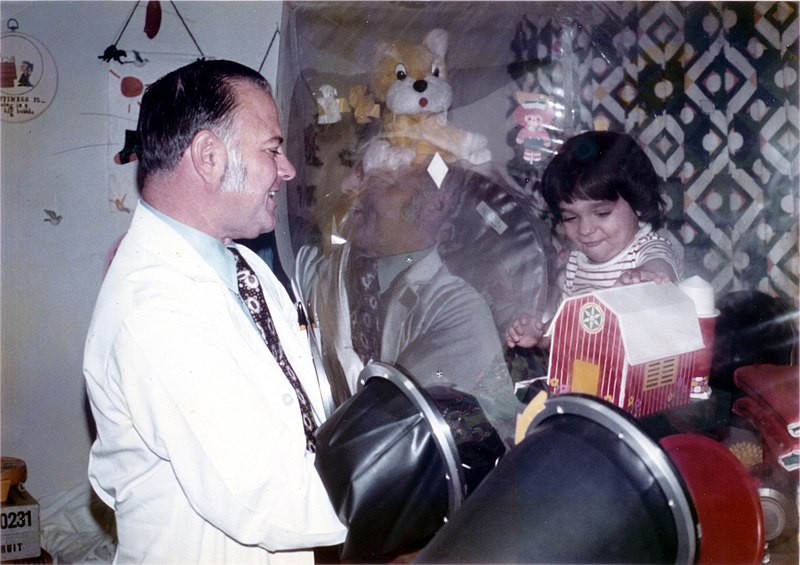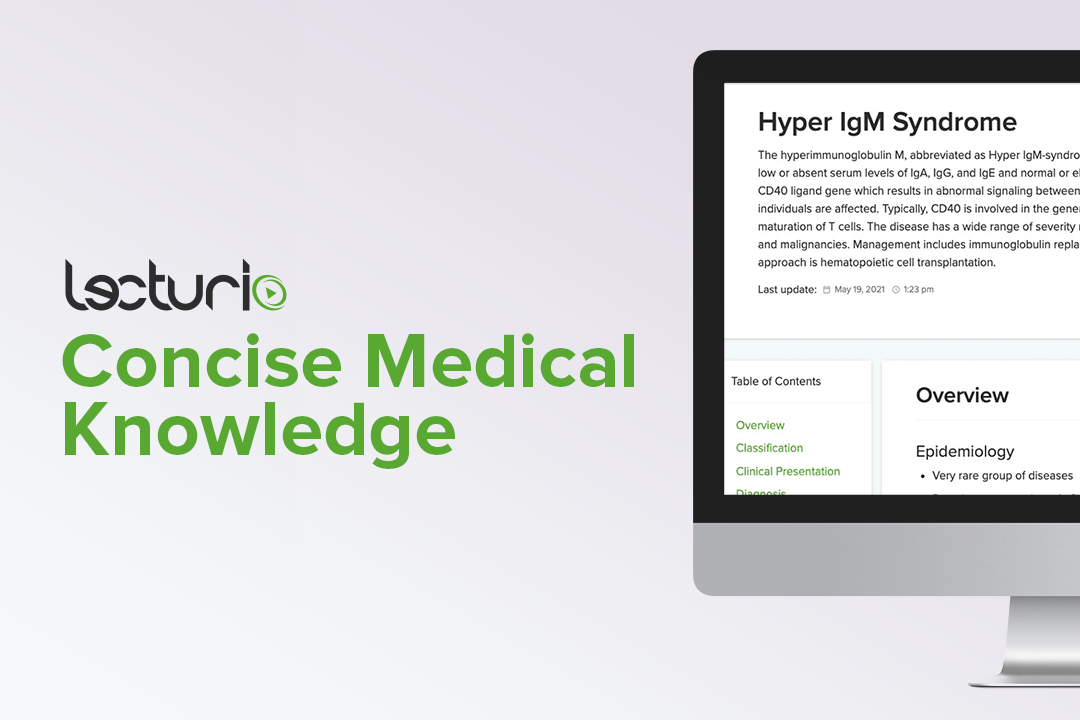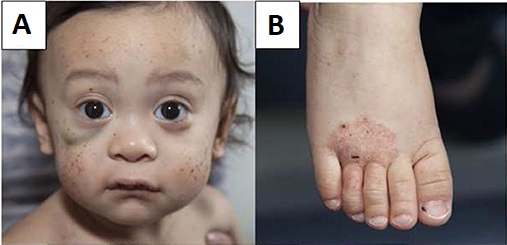Playlist
Show Playlist
Hide Playlist
Introduction – Primary Immunodeficiency
-
Slides Immunodeficiency.pdf
-
Download Lecture Overview
00:01 Like any rather complicated machine, and the immune system consists of quite a lot of different cells and molecules, and they have to interact in various ways. 00:09 Things can go wrong sometimes in the immune response, and you can end up with immunodeficiency - a deficient immune response. 00:17 Sometimes this is due to external agents, and in that case we refer to secondary immunodeficiency. 00:26 But now we’re going to discuss primary immunodeficiency. 00:31 So primary immunodeficiency is defective immunity that is due to either a inherited or an acquired gene defect. 00:41 The distribution of cellular primary immunodeficiency defects is that around about half of them are caused by defects in B-cells, and therefore in antibody production. 00:58 Around about 20% of primary immunodeficiency defects are combined T and B-cell defects. 01:07 Approximately 20% affect the phagocytic cells. 01:13 And around about 10% affect just the T-cells without affecting other parts of the immune response. 01:20 The consequences of primary immunodeficiency are that we see opportunistic infections. 01:27 These are infections that most of us, most of the time are not really troubled by. 01:33 We will deal with them perfectly adequately. 01:35 But in patients with primary immunodeficiency, these infectious agents take opportunity of the fact that there is defective immune response, to establish disease. 01:49 The type of infections actually reflects the defect. 01:53 So a defect in phagocytic cells will result in a different spectrum of infections, to for example, a defect in B-lymphocytes. Immunodeficiency affecting T-cells results in predominantly intracellular infections. For example, viruses, mycobacteria and so forth. 02:14 Whereas immunodeficiency affecting phagocytic cells and B-cells and complement, mainly results in extracellular bacteria. A little bit of background about primary immunodeficiency. Most primary immunodeficiencies are caused by an inherited gene defect. Although, as already mentioned, some are due to spontaneous mutations. The inheritance may be autosomal recessive, in other words, both copies need to be defective, or autosomal dominance where only one copy needs to be defective. Others are X-linked and therefore more common in boys than girls. The severity will vary depending on the nature of the mutation. These diseases tend to manifest themselves in infancy. The vast majority of them are inherited gene defects. Therefore you tend to pick them up in the early years of life. When infants are a few months, or one or two years old, they’ll keep getting recurrent infections. They’ll be investigated for this, and in some of those individuals, they will be found to have a primary immunodeficiency. 03:38 Most primary immunodeficiencies have a low prevalence. 03:42 They’re fairly rare diseases generally speaking. 03:47 However, the study of primary immunodeficiencies has provided valuable insights into individual components of the immune response. 03:56 So although they’re relatively uncommon, it’s enabled us to answer questions about how the immune system functions because we can identify individuals that have one particular component of the immune system that is dysfunctional due to these inherited gene defects. 04:18 As already mentioned, quite a few primary immunodeficiencies are caused by genes that are present in the X chromosome. And therefore these diseases are more common in boys. And here is a list of some of the X-linked primary immunodeficiencies. 04:35 And as you can see, there are a number of these. 04:37 And we will be discussing some of these a little later in this lecture. 04:42 Examples of primary immunodeficiencies that affect the innate response include complement deficiencies, paroxysmal nocturnal hemoglobinuria, hereditary angioedema, chronic granulomatous disease, myeloperoxidase deficiency, glucose-6-phosphate dehydrogenase deficiency, the leukocyte adhesion deficiency, Chediak-Higashi syndrome, and a number of autoinflammatory disorders.
About the Lecture
The lecture Introduction – Primary Immunodeficiency by Peter Delves, PhD is from the course Immunodeficiency and Immune Deficiency Diseases. It contains the following chapters:
- Introduction to Primary Immunodeficiency
- X-linked Primary Immunodeficiencies
Included Quiz Questions
Primary immunodeficiency diseases are most likely to present in which of the following age groups?
- Under 5 years of age
- 5-10 years of age
- In teenagers
- In late middle age
- In the elderly
The most common type of primary immunodeficiency results from a primary defect in which type of immune cell?
- B cell
- Combined T cell and B cell
- Phagocytic cell
- Antigen presenting cell
- T cell
Which of the following immune cells is most effective at destroying host cells that are infected with viruses?
- Cytotoxic T cells
- B cells
- Macrophages
- Natural killer cells
- Plasma cells
Which of the following is an X-linked primary immunodeficiency?
- Wiskott–Aldrich syndrome
- Leukocyte adhesion deficiency
- Myeloperoxidase deficiency
- Hereditary angioedema
- Chediak-Higashi syndrome
Customer reviews
5,0 of 5 stars
| 5 Stars |
|
2 |
| 4 Stars |
|
0 |
| 3 Stars |
|
0 |
| 2 Stars |
|
0 |
| 1 Star |
|
0 |
Thank you dear Professor, great simple way to explain difficult topics.
It was really helpful to have an introduction on the primary immunodeficiency before the actual lecture at my uni







